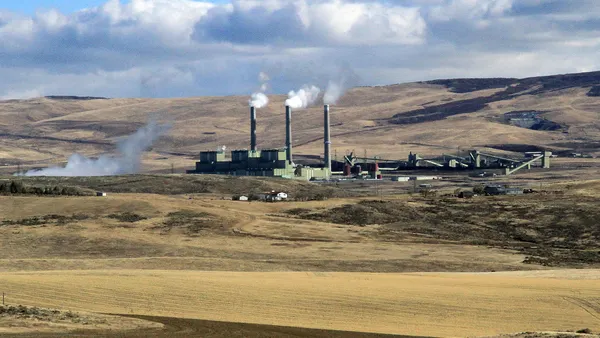As people convene this week to drive action and progress at Climate Week in New York City, it is clear that working with scientifically sound, forward-looking information and addressing data gaps is crucial for advancing the energy transition and for tackling the challenges of climate change.
Climate change is expected to affect every aspect of the power sector, from generation, transmission, and distribution to electricity demand, with both chronic and acute impacts. At the same time that damage from severe storms and other climate hazards is increasing, demand growth from electrification, manufacturing, data centers, and artificial intelligence will place additional stress on the power grid. Simultaneously, as more renewable resources connect to the energy system, the grid itself must become more flexible, adaptable, and reliable. One way to address the inevitable challenges of a weather-dependent system that is in transition is to identify and address gaps in climate data today.
Forward-looking climate information can help grid planners and operators better prepare for extreme weather events to advance the resilience of a weather-sensitive electricity system. Since its inception in 2022, EPRI’s Climate REsilience and ADaptation initiative (READi) has been actively assessing the availability and suitability of climate data for power system applications. To help the energy industry and other stakeholders prioritize high-value data development, EPRI released an assessment on climate data gaps to identify present-day limitations specific to power system planning.
There has been significant growth in the volume and availability of climate data in recent years, including public data portals such as NOAA Climate Data Online, Argonne’s Climate Risk and Resilience Portal, Cal-Adapt, and the Copernicus data store. However, limitations in location precision, hourly detail, and geophysical process representation affect the ability of the power industry to integrate these data to prepare for key climate shifts. In its assessment, EPRI addresses gaps by data product type, which includes local ground-based weather stations, satellite measurements, historical reanalysis datasets, and climate model simulations of future conditions. Limitations include the length and consistency of historical records, lack of observed solar irradiance and hub height wind speeds, and barriers to public access, to name just a few.
The other broad category in EPRI’s assessment provides an overview of meteorological data gaps that are specific to individual climate variables and hazards - such as temperature, humidity, cloud cover, wind speed and direction, precipitation, solar irradiance, droughts, flooding, water quality - and acute extremes like wildfires, tropical cyclones, tornadoes, and severe storms. Some of these gaps exist due to technical or resource constraints, including limited historical baselines for validation, as well as computing costs and storage requirements to produce climate model simulations at local scale.
Close collaboration across power system and atmospheric science disciplines is a vital component in the creation of more relevant climate data. This is demonstrated by EPRI and the National Oceanic and Atmospheric Administration’s 2022 memorandum of understanding, which is focused on developing a science-based approach to physical climate risk assessment in the energy sector.
Another of the many ways EPRI is supporting collaboration on a global scale is through its participation in the World Meteorological Organization’s (WMO) initiative to enact the 2023 goals set forth by the United Nations climate change conference, COP28. The WMO is bringing together meteorology and energy industry leaders to develop global weather and climate services to support renewable energy production, build resilient energy systems, and empower countries to achieve their net zero carbon targets. The group has developed a strategic plan for providing such services and is in the early stages of implementing a pilot program in the Persian Gulf region.
Another effort underway addresses data integration challenges. Power system models often rely on hourly timeseries to represent weather, alongside electricity supply and demand profiles, but climate models typically only report daily conditions. To overcome this challenge, EPRI has advanced a statistical method to map seasonal projections of future climate change onto historical weather records. This methodology preserves real-world characteristics like variability, extreme events, and joint correlations among variables such as wind, solar, and temperature. EPRI has collaborated with Salt River Project (SRP) to generate a comprehensive, forward-looking weather dataset for their modeling needs.
“Maintaining reliability throughout the clean energy transition is critically important to SRP and requires advanced study of how a renewable-heavy resource portfolio will perform in future climate scenarios,” said Jon Cook, SRP principal analyst, resource analysis and planning. “SRP strives to make resource decisions informed by the best available climate data and analysis. EPRI’s data will allow us to quantify potential risk to our future power system posed by more frequent and extreme desert heat events, which will help improve the robustness of our planning.”
“EPRI will continue to facilitate conversations with a broad set of stakeholders to explore gaps in climate data that can be used to inform resilience assessments for the power system,” said Morgan Scott, EPRI’s Director of Climate READi. “As people come together for Climate Week and attend other events in the coming months, robust engagement among industry leaders provide opportunities for additional stakeholders to become involved in this critical work.”
For more information on climate variables and hazards, visit EPRI’s Climate Data Users Guide section on Weather and Climate Hazards to the Energy System. It includes extended descriptions and comparisons of historical and future climate data sources and is intended to give system planners, engineers, regulators, and stakeholders a concise, comprehensive guide to climate data for physical climate risk assessment. Another READi resource is its Climate Data Inventory, which examines available climate datasets and outlines the characteristics of those datasets, such as variables, length of record, spatial resolution, and temporal resolution.










